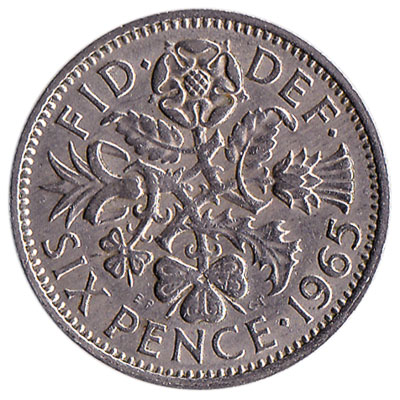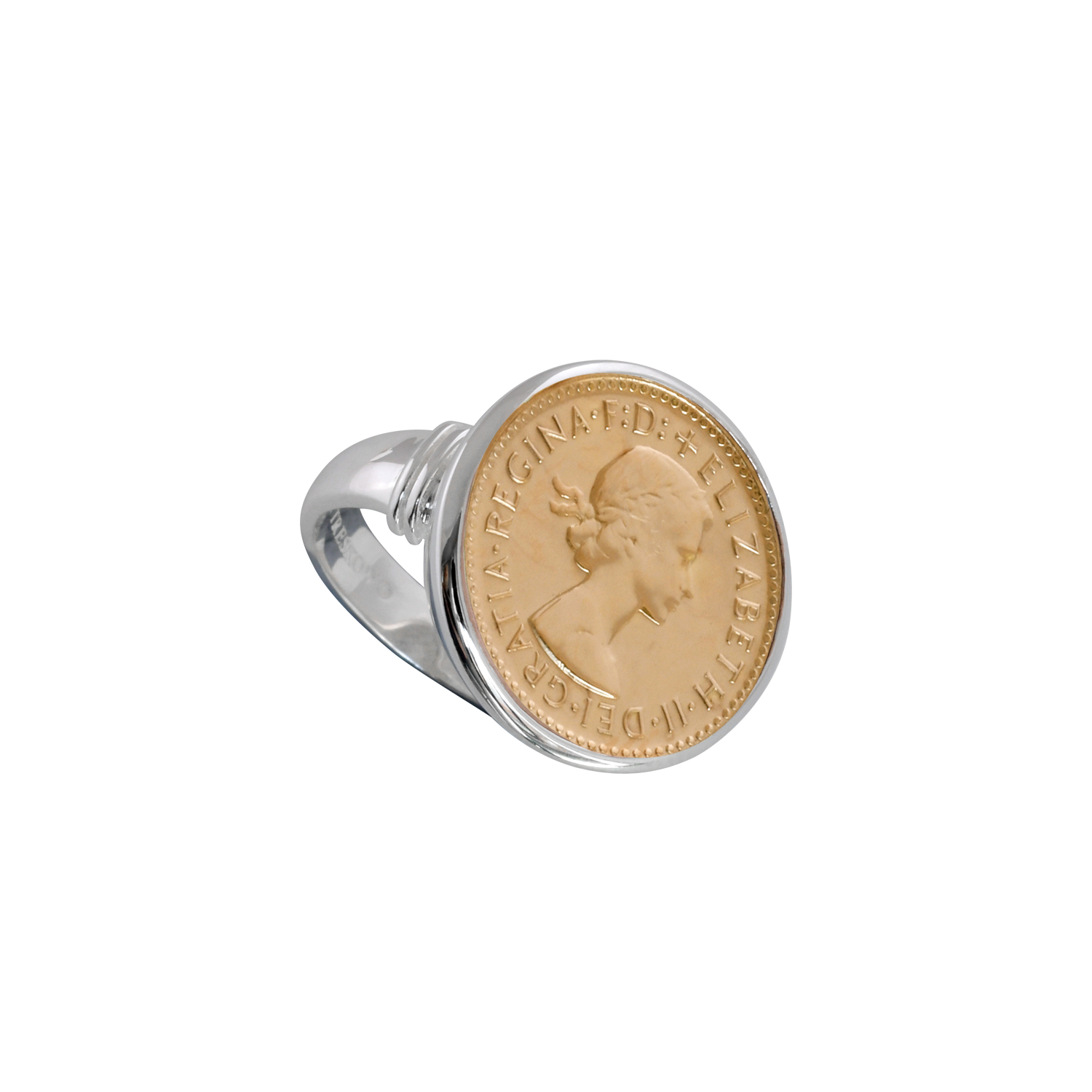Sixpence Coin
- Sixpence Coin Holder
- Where To Get A Sixpence
- Sixpence Coins Ebay
- Sixpence Coin Meaning
- Sixpence Coin Wedding
- Sixpence Coin Bezel
What is a Sixpence? The sixpence is an English coin that was minted beginning in 1558 and continued until 1967. Sixpence are no longer minted in England and are becoming rare. The Tradition of the Sixpence According to tradition, during the early 1600's the Lord of the Manor presented a sixpence to the bride as a wedding gift. Lucky Sixpence Coin for the Bride, You Choose the Date. Quick view Compare Add to Cart. The perfect sixpence for a 2021 bride. Quick view Compare Add to Cart. 100+ Year Old Sterling Silver Sixpence Coins. Quick view Compare Add to. An English sixpence coin select the date and amount from the drop down menu dates range from 1947 to 1951 Cupro Nickel Sixpence coins. From shop akpcoins. 5 out of 5 stars (4,220) 4,220 reviews $ 1.43. Favorite Add to. Other names for coins. A shilling was often called a 'bob'. 'It cost me four bob.' Five shilling piece or crown was sometimes called a dollar. Sixpence (silver) - often called a 'tanner' A penny was often called a 'copper' after the metal it was minted from. Old money conversions to money used today. Sixpence - 2½p; One shilling (or 'bob') - 5p. From an online etymological dictionary: 'sixpence,' slang word first recorded 1811, of unknown origin. Hotten, lexicographer of Victorian slang, thinks it may be from tanner and skin, rhyming.
Please note: We have mainly written about England, as that is the country within the UK where our students live. We would be very happy for schools and visitors to send us information we can add to our website on Wales and Scotland. After the Norman Conquest in 1066, the pound was divided into twenty shillings or 240 pennies. It remained so until decimalization on 15 February 1971, when the pound was divided up as it is still done today. Before 1971 money was divided into:
Before decimalization on 15 February 1971, there were twenty (20) shillings per pound. The shilling was subdivided into twelve (12) pennies. The penny was further sub-divided into two halfpennies or four farthings (quarter pennies). 2 farthings = 1 halfpenny
Symbols The symbols 's' for shilling and 'd' for pence derive from the Latin solidus and denarius used in the Middle Ages. The '£' sign developed from the 'l' for libra.
One pound A £1 coin was called a Sovereign and was made of gold. A paper pound often was called a quid. More than a pound (£) 1 guinea and a £5.0.0 note 1 guinea = £1-1s-0d ( £1/1/- ) = one pound and one shilling = 21 shillings or 21/- (which is £1.05 in todays money) 1 guinea could be written as '1g' or '1gn'. A guinea was considered a more gentlemanly amount than £1. You paid tradesmen, such as a carpenter, in pounds but gentlemen, such as an artist, in guineas. A third of a guinea equalled exactly seven shillings. Why guinea? Because the Guinea coast was fabled for its gold, and its name became attached to other things like guinea fowl, and New Guinea.
Less than a pound (£) Shilling and pennies 'Bob' is slang for shilling (which is 5p in todays money) 1 shilling equalled twelve pence (12d). £1 (one pound) equalled 20shillings (20s or 20/-) 240 pennies ( 240d ) = £1 There were 240 pennies to a pound because originally 240 silver penny coins weighed 1 pound (1lb). A sum of £3 12s 6d was normally written as £3-12-6, but a sum of 12s 6d was normally recorded as 12/6. Amounts less than a pound were also written as: 12/6 meaning 12s-6d 10/- meaning ten shillings. An amount such as 12/6 would be pronounced 'twelve and six' as a more casual form of 'twelve shillings and sixpence'. More than a Shilling (s. or /- )Coins of more than one shilling ( 1/- ) but less than £1 in value were:
Less than a Shilling (s. or /- )
The word threepence would often be pronounced as though there was only a single middle 'e', therefore 'thre-pence'. The slang name for the coin was Joey. Penny coins were referred to as 'coppers'
Less than a penny(d)Pennies were broken down into other coins:
Farthing Half Penny Other names for coinsA shilling was often called a 'bob'. Five shilling piece or crown was sometimes called a dollar sixpence (silver) - often called a 'tanner' A penny was often called a 'copper' after the metal it was minted from. Old money conversions to money used today
| |||||||||||||||||||||||||||||||||||||||||||||||||||
© Copyright - please read |
© Copyright Mandy Barrow 2013
Mandy is the creator of the Woodlands Resources section of the Woodlands Junior website.
The two websites projectbritain.com and primaryhomeworkhelp.co.uk are the new homes for the Woodlands Resources.
Mandy left Woodlands in 2003 to work in Kent schools as an ICT Consulatant.
She now teaches computers at The Granville School and St. John's Primary School in Sevenoaks Kent.
| ONLINE COINS CATALOG |
The sixpence (six pence, designation - 6d) is a British coin. It was worth 1/40 of a pound sterling and minted from 1551. Sixpences continued used after decimal reform 1971 with a value of 2.5 new pence until 1980.
Edward VI
silver 6 pence without date (1551-1553)
POSVIDEV ADIVTOREM MEVM
VI / EDWΛRD VI D G AGL FRAN Z HIB REX
Coin value - $80-100
Philip and Mary
silver 6 pence 1557 (1555-1557)
POSVIMVS DEVM ADIVTOREM NOST
PHILIP Z MARIA D G REX Z REGINA AN / 1557
Elizabeth I
silver 6 pence 1560-1561
POSVIDEV ADIVTOREM MEV / 1581
ELIZABET D G ANG FR ET HI REGINA
Elizabeth I
silver 6 pence 1581
POSVIDEV ADIVTOREM MEV / 1581
ELIZABET D G ANG FR ET HI REGINA
James I
silver 6 pence 1604
QVAE DEVS CONIVNXIT NEMO SEPARET / 1604
VI / IACOBVS D G MAG BRIT EIRA ET HIB REX
Charles I
silver 6 pence without date (1625-1641)
CHRISTO AVSPICE REGNO
VI / CAROLVS D G MA BR FR ET HI REX
Charles II
silver 6 pence without date (1660-1673)
CHRISTO AVSPICE REGNO
CAROLVS II D G MA BR FR ET HI REX
Charles II
silver 6 pence 1674
MAG BR FRA ET HIB REX 1674
CAROLVS II DEI GRATIA
James II
silver 6 pence 1686
MAG BR FRA ET HIB REX 1686
IACOBVS II DEI GRATIA
William III and Mary II
silver 6 pence 1693
MAG BR FR ET HI REX ET REGINA 1693
GVLIELMVS ET MARIA DEI GRATIA
William III
silver 6 pence 1696
MAG BR FRA ET HIB REX 1696
GVLIELMVS III DEI GRATIA
Anne
silver 6 pence 1702
MAG BR FRA ET HIB REG 1702
ANNA DEI GRATIA
George I
silver 6 pence 1723
BRVN ET L DVX S R I A TH ET EL 1723
GEORGIVS D G M BR FR ET HIB REX F D
George II
silver 6 pence 1728
M B F ET H REX F D B ET L DVX S R I A T ET E 1728

GEORGIVS II DEI GRATIA
George III
silver 6 pence 1787
silver
M B F ET H REX F D B ET L D S R I A T ET E 1787
GEORGIVS III DEI GRATIA
silver sixpence 1816
(1816, 1817, 1818, 1819, 1820)
silver
HONI SOIT Q MAL Y PENSE
GEOR III BRITT REX F D / 1816
George IV
silver 6 pence 1824
(1824, 1825, 1826)
ANNO 1824
GEORGIUS IIII D G BRITANIAR REX F D
George IV
silver 6 pence 1826
(1826, 1827, 1828, 1829)
BRITANIARUM REX FIDEI DERENSOR
GEORGIUS IV DEI GRATIA
William IV
silver 6 pence 1836
(1831, 1834, 1835, 1836, 1837)
SIX PENCE 1836
GULIELMUS IIII D G BRITANNIAR REX F D
Victoria
silver 6 pence 1853
(1838, 1839, 1840, 1841, 1842, 1843, 1844, 1845, 1846, 1847, 1848, 1849, 1850, 1851, 1852, 1853, 1854, 1855, 1856, 1857, 1858, 1859, 1860, 1861, 1862, 1863)
SIX PENCE / 1853
VICTORIA DEI GRATIA BRITT REGINA F D
Victoria
silver 6 pence 1864-1880
(1864, 1865, 1866, 1867, 1868, 1869, 1870, 1871, 1872, 1873, 1874, 1875, 1876, 1877, 1879, 1880)
SIX PENCE / 1889
VICTORIA DEI GRATIA BRITT REGINA F D
Victoria
silver 6 pence 1880-1887
1880, 1881, 1882, 1883, 1884, 1885, 1886)

SIX PENCE / 1889
VICTORIA DEI GRATIA BRITT REGINA F D
Victoria
silver 6 pence 1887
HONI SOIT OUIMAL Y PENSI / 1887
VICTORIA DEI GRATIA BRITT REGINA F D
Victoria
silver 6 pence 1889
(1887, 1888, 1889, 1890, 1891, 1892, 1893)
SIX PENCE / 1889
VICTORIA DEI GRATIA BRITT REGINA F D
Victoria
silver 6 pence 1893
(1893, 1894, 1895, 1896, 1897, 1898, 1899, 1900, 1901)
SIX PENCE / 1893
VICTORIA DEI GRA BRITT REGINA FID DEI IND IMP
Edward VII
silver 6 pence 1905
(1902, 1903, 1904, 1905, 1906, 1907, 1908, 1909, 1910)
SIX PENCE / 1905
EDWARDVS VII DEI GRA BRITT OMN REX FID DEF IND IMP
George V
silver 6 pence 1919
(1911, 1912, 1913, 1914, 1915, 1916, 1917, 1918, 1919, 1920)

silver 0.925
FID DEF IND IMP / SIX PENCE / 1919
Sixpence Coin Holder
CEORGIVS V DEI GRA BRITT OMN REX
George V
silver 6 pence 1926
(1920, 1921, 1922, 1923, 1924, 1925, 1926, 1927)
silver 0.500
FID DEF IND IMP / SIX PENCE / 1926
Where To Get A Sixpence
CEORGIVS V DEI GRA BRITT OMN REXGeorge V
silver 6 pence 1936
(1927, 1928, 1929, 1930, 1931, 1932, 1933, 1934, 1935, 1936)
SIX PENCE / 1936
CEORGIVS V D G BRITT OMN REX F D IND IMP
George VI
silver 6 pence 1937
(1937, 1938, 1939, 1940, 1941, 1942, 1943, 1944, 1945, 1946)
SIX PENCE / FID DEF IND IMP / 1937 / GRI
GEORGIVS VI D G BR OMN REX
George VI
copper-nickel 6 pence 1948
(1947, 1948)
Sixpence Coins Ebay
SIX PENCE / FID DEF IND IMP / 1948 / GRIGEORGIVS VI D G BR OMN REX
George VI
copper-nickel 6 pence 1949
 (1949, 1950, 1951, 1952)
(1949, 1950, 1951, 1952)SIX PENCE / FID DEF / 1949
 GEORGIVS VI D G BR OMN REX
GEORGIVS VI D G BR OMN REXElizabeth II
commemorative copper-nickel 6 pence 1953
Coronation of Elizabeth II
SIX PENCE 1953 / FID DEF
ELIZABETH II DEI GRATIA BRITT OMN REGINA
Elizabeth II
copper-nickel 6 pence 1964
(1954, 1955, 1956, 1957, 1958, 1959,1960, 1961, 1962, 1963, 1964, 1965, 1966, 1967, 1968, 1969, 1970)
Sixpence Coin Meaning
Sixpence Coin Wedding
SIX PENCE 1964 / FID DEFSixpence Coin Bezel
ELIZABETH II DEI GRATIA REGINASee also British coins:
England and Great Britain
United Kingdom till 1952
United Kingdom from 1952